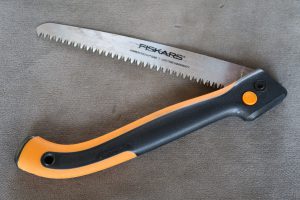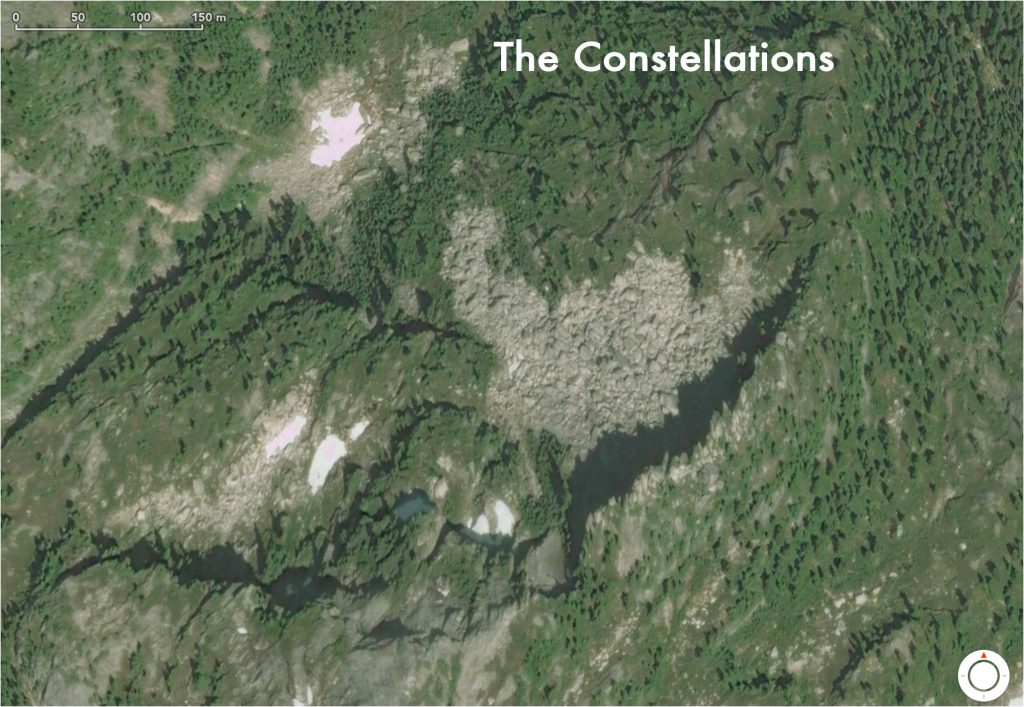My second trip up to The Constellations was alone and my first day of bouldering up there. I climbed on the boulders Scot and I had explored. As I left, I unintentionally took a different trail out than how we had approached and left before. Hidden behind a clump of trees and in the distance was the featured face of a boulder I hadn’t seen before. It looked huge. Maybe 8 meters tall! Maybe too big to boulder on up there with limited crash pads. I too tired to wobble up the talus to the boulder so I took a crappy picture from the distance and spent the following days down at sea level fantasizing about the monster face.
On the third trip, the first thing Sasha and I did was walk up to check out the big face. With every approach step, the face mysteriously shrunk. It wasn’t too big. It was almost the perfect size. We found so much to climb that day around our warm-up area that we never made it back to this hidden face.
My priority for the fourth trip was to climb this face. It is the first problem up at The Constellations that has the genuinely overhanging, gymnastic quality many of us desire.
In astronomy, an occultation is an event when one heavenly body passes between Earth and another more distant heavenly body blocking the view of the distant object.

